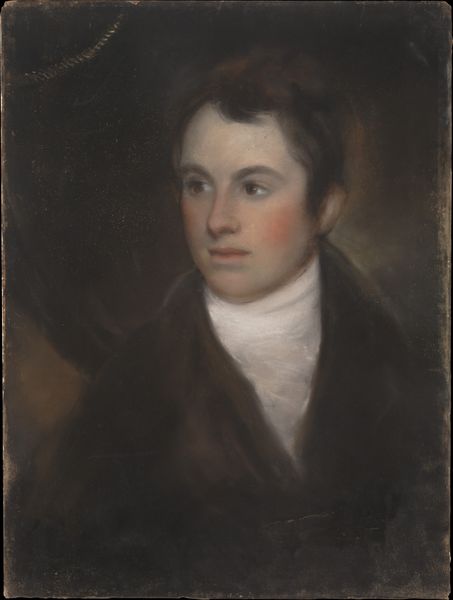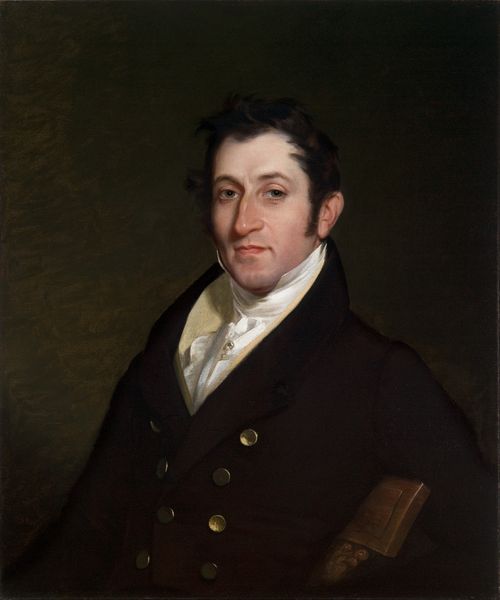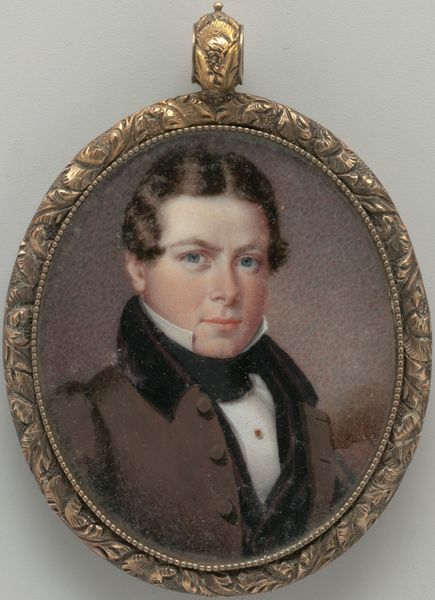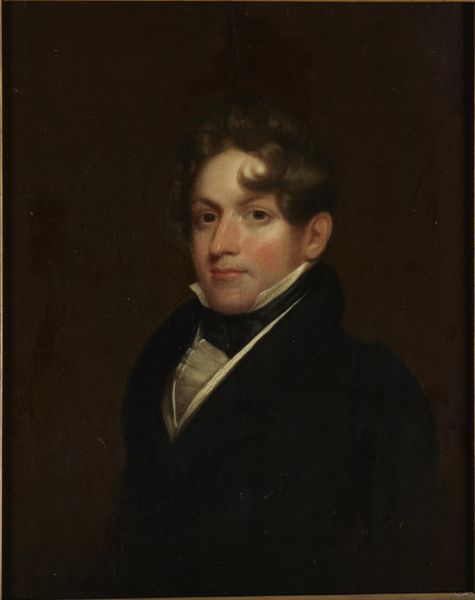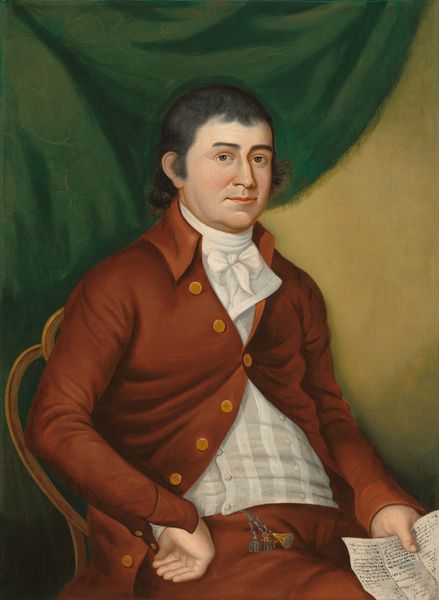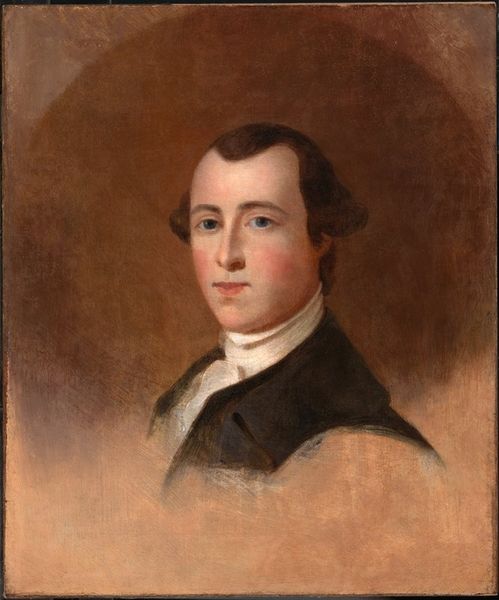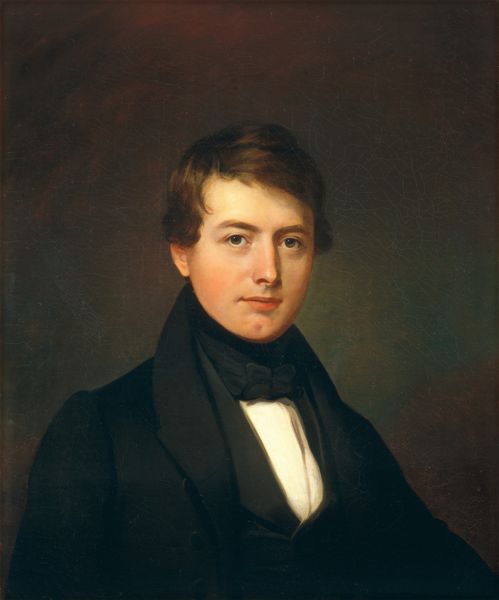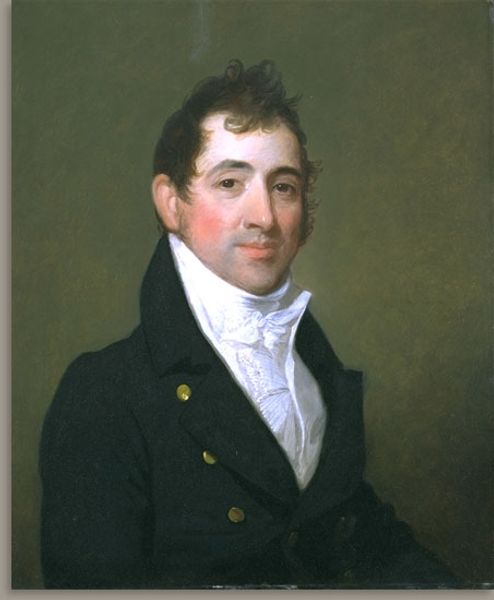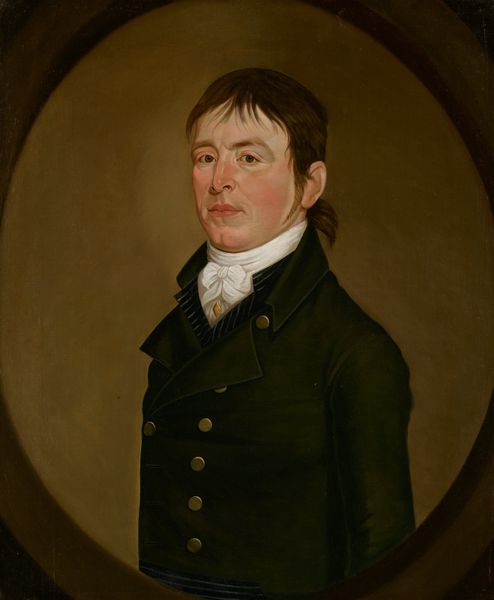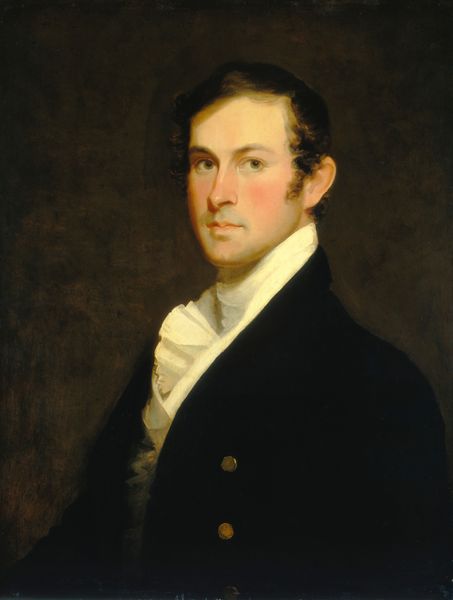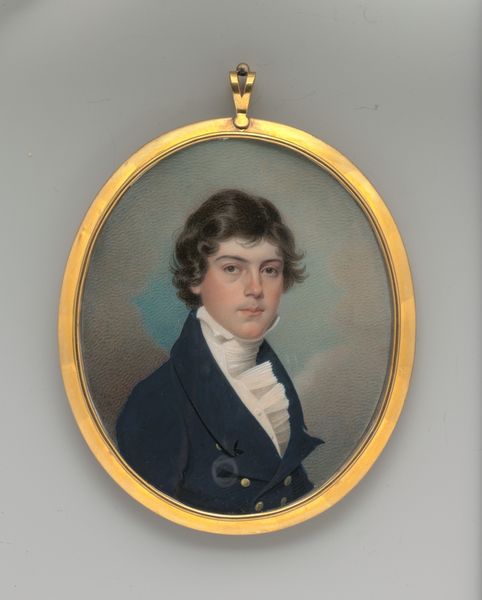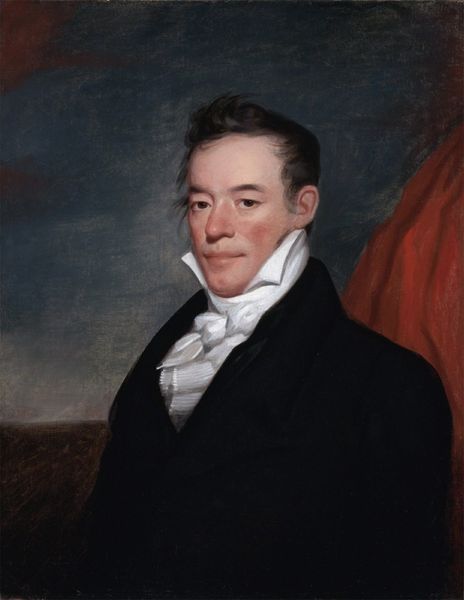
pastel
#
portrait
#
romanticism
#
pastel
#
academic-art
Dimensions: 23 3/4 x 17 3/8 in. (60.3 x 44.1 cm)
Copyright: Public Domain
Curator: Looking at this piece, what strikes me immediately is the rather bold use of colour in the sitter's attire. Editor: It feels incredibly staged. A performance of wealth and status from a bygone era. How does this individual fit into the sociopolitical landscape of 1801? Curator: Indeed. The work we’re looking at is a portrait of Robert Shurlock, made in 1801. It's currently residing here at The Met. It’s made with pastel on paper, and its inherent fragility speaks volumes. What looks like casual confidence belies the inherent constraints of this form of art and of the sitter's position. Editor: Constraints are an interesting angle. Let's consider how the medium of pastel affects the perceived class of the sitter, Robert Shurlock. Would a grand oil portrait have amplified the narrative of established wealth, maybe distancing Shurlock further from, say, the revolutionary sentiments brewing in Europe at the time? The work really hints at the societal norms tightly cinching subjects of the time. Curator: Certainly. The pastels were manufactured through a specific set of steps and by specific workshops to provide these pigments. And we can't overlook the fact that portraiture like this was a luxury accessible to only a certain tier of society, which underscores the class dynamics in play. The very *stuff* of art becomes another signal, don't you think? Editor: Absolutely, I'd even suggest the clothing isn't accidental; those carefully chosen shades broadcast an elevated status but subtly allude to how identity and self-expression was cautiously presented according to a stringent cultural code. It’s almost a visual debate with what could or should have been possible beyond mere class. Curator: A fascinating consideration. It's compelling how focusing on materials can peel back the layers, revealing so much more than just surface-level observations about wealth. Editor: Agreed. These pieces help us understand past lives through their context within art and its practice, allowing dialogue about their intersectional identities and their places in time. Curator: An interesting way to view Shurlock, hopefully our audience shares in that.
Comments
No comments
Be the first to comment and join the conversation on the ultimate creative platform.
